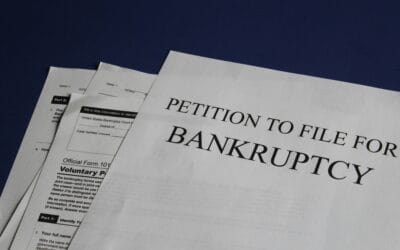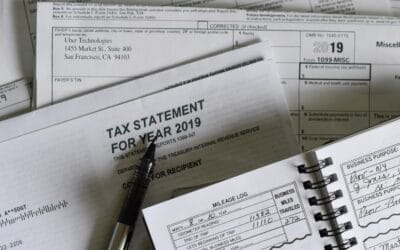5 Common Bankruptcy Myths Debunked by a Washington, PA Attorney
Separating Fact from Fiction in Bankruptcy Law
When facing overwhelming debt, many Washington, PA residents hesitate to explore bankruptcy options due to widespread misconceptions about the process. These bankruptcy myths often prevent honest, hardworking people from accessing the legal protections designed to help them achieve a genuine fresh start.
As a bankruptcy attorney serving Washington County and surrounding areas, I encounter these myths daily in my practice. Today, I want to set the record straight and provide you with accurate information about Chapter 7 bankruptcy, so you can make informed decisions about your financial future.
Understanding the truth about bankruptcy law is the first step toward reclaiming your financial freedom. Let’s examine and debunk the five most common myths I hear from clients in my Washington, PA office.
This is perhaps the most persistent and damaging myth about bankruptcy. Many people believe that filing for Chapter 7 bankruptcy will permanently destroy their credit, making it impossible to secure loans, credit cards, or even housing in the future.
The Reality: While bankruptcy does initially impact your credit score, it’s often not as severe or long-lasting as people imagine. More importantly, if you’re already struggling with overwhelming debt, missed payments, and maxed-out credit cards, your credit is likely already significantly damaged.
Here’s what actually happens to your credit after Chapter 7 bankruptcy:
The bankruptcy filing itself remains on your credit report for 10 years, but its impact on your credit score diminishes significantly over time. Most of my clients begin seeing credit score improvements within 12-18 months after discharge, especially when they follow a strategic credit rebuilding plan.
In fact, many clients find their credit scores improve faster after bankruptcy than they would have while struggling to make minimum payments on overwhelming debt. Without the burden of excessive debt-to-income ratios, you can focus on building positive credit history rather than just trying to stay afloat.
Client Success Example: Sarah, a Washington, PA resident, saw her credit score increase from 480 to 650 within two years of her Chapter 7 discharge. She was able to purchase a reliable used car with financing and even qualified for a secured credit card within six months of her bankruptcy completion.
The key is understanding that bankruptcy provides a clean slate that, when managed properly, can lead to better credit health than continuing to struggle with unmanageable debt payments.
This fear keeps many people awake at night, imagining bankruptcy trustees seizing their homes, cars, and personal belongings. The myth suggests that bankruptcy means losing all your possessions and starting over with nothing.
The Reality: Pennsylvania’s generous exemption laws protect most of what you need to maintain your basic living situation and continue working. The vast majority of my Chapter 7 clients keep their homes, vehicles, and personal property.
Here’s what Pennsylvania law actually protects:
Homestead Exemption: You can protect significant equity in your primary residence. For most families in Washington County, this exemption covers the full value of their home equity.
Vehicle Exemption: Pennsylvania allows you to protect equity in your vehicle up to a substantial amount, which typically covers reliable transportation needed for work and daily life.
Personal Property: Household goods, clothing, furniture, and other personal belongings are generally protected under state exemptions.
Tools of the Trade: Equipment and tools necessary for your profession are protected, ensuring you can continue earning income.
The goal of bankruptcy law is to provide a fresh start, not to leave people destitute. The exemption system ensures that honest debtors can maintain their basic living situation while getting relief from overwhelming debt.
Real Example: Tom, a Washington, PA construction worker, was able to keep his house, work truck, and all his construction tools when he filed Chapter 7. He lost nothing essential to his life or livelihood while eliminating over $40,000 in credit card and medical debt.
This harmful stereotype suggests that bankruptcy is only for people who lived beyond their means or made poor financial decisions. It creates shame and embarrassment that prevents people from seeking the help they need.
The Reality: The overwhelming majority of bankruptcy filings result from circumstances beyond the individual’s control. Based on my experience representing clients in Washington County, the most common causes of financial distress include:
Medical Emergencies: Even with insurance, serious illness or injury can create crushing medical debt. A single hospital stay or ongoing treatment for chronic conditions can result in bills that exceed annual income.
Job Loss: Economic downturns, company closures, and industry changes can eliminate steady employment without warning. Even responsible savers can quickly exhaust emergency funds during extended unemployment.
Divorce: The financial impact of divorce often creates insurmountable debt, especially when legal fees combine with the challenge of maintaining two households on income that previously supported one.
Business Failure: Entrepreneurs who personally guaranteed business loans can face overwhelming debt when economic conditions or other factors force business closure.
Unexpected Major Expenses: Home repairs from natural disasters, vehicle accidents, or family emergencies can create debt burdens that responsible budgeting cannot overcome.
These are not failures of character or responsibility—they’re the financial realities that millions of Americans face. Bankruptcy laws exist specifically to help honest people overcome circumstances beyond their control.
Professional Insight: In my practice, I’ve represented teachers, nurses, small business owners, construction workers, and retirees. These are hardworking, responsible people who found themselves in impossible situations through no fault of their own.
Many people assume that the bankruptcy process is prohibitively expensive and too complex for average people to navigate. This myth often prevents people from even exploring their options.
The Reality: While bankruptcy does involve legal fees and court costs, these expenses are typically far less than the debt you’ll eliminate. More importantly, most bankruptcy attorneys offer payment plans and flexible arrangements to make legal representation accessible.
Cost Comparison: Consider John, a Washington, PA resident who eliminated $45,000 in debt through Chapter 7 bankruptcy. His total legal fees and court costs were less than $2,000—roughly equivalent to what he had been paying in minimum credit card payments every two months.
The Process: While bankruptcy does require thorough documentation and legal procedures, experienced attorneys handle the complex aspects while guiding clients through each step. Most Chapter 7 cases in Washington County follow a predictable timeline:
- Initial Consultation: Free or low-cost meeting to evaluate your situation
- Document Gathering: Your attorney provides checklists and guidance
- Petition Filing: Attorney prepares and files all necessary paperwork
- Meeting of Creditors: Brief, routine meeting with trustee (usually 10-15 minutes)
- Discharge: Court order eliminating discharged debts (typically 4-6 months after filing)
Payment Options: Most bankruptcy attorneys understand that clients facing financial hardship cannot pay large legal fees upfront. Payment plans, reduced fees for qualifying clients, and other arrangements make professional representation accessible to those who need it most.
This myth prevents many middle-income families from exploring bankruptcy options, assuming their income automatically disqualifies them from Chapter 7 relief.
The Reality: Chapter 7 eligibility depends on the means test, which considers not just income but also necessary expenses, family size, and other factors. Many people who assume they earn “too much” actually qualify for Chapter 7 protection.
The Means Test Explained: This calculation compares your average monthly income over the six months before filing to the median income for similar households in Pennsylvania. However, even if your income exceeds the median, you may still qualify if your necessary expenses demonstrate that you lack sufficient disposable income to pay creditors.
Necessary Expenses Include:
- Housing costs (mortgage/rent, utilities, maintenance)
- Transportation (car payments, insurance, fuel, maintenance)
- Food and clothing for your household
- Medical expenses and insurance premiums
- Child care and education costs
- Tax obligations and mandatory payroll deductions
Local Example: Maria, a Washington, PA single mother earning $55,000 annually, assumed she made too much for Chapter 7. However, after accounting for her mortgage, childcare costs, medical expenses for her diabetic child, and other necessary expenses, she easily qualified and successfully discharged $28,000 in credit card debt.
Alternative Options: Even if you don’t qualify for Chapter 7, Chapter 13 bankruptcy may provide affordable debt relief through a manageable payment plan. The key is getting a professional evaluation of your specific situation rather than making assumptions based on income alone.
The Truth About Bankruptcy: It's a Legal Right, Not a Moral Failing
The most important truth I want to share is that bankruptcy is a legal right provided by federal law to help honest people overcome financial hardship. The founders of our country recognized that economic difficulties could destroy otherwise productive citizens, so they included bankruptcy protections in the Constitution itself.
Historical Perspective: Bankruptcy laws have evolved to balance the rights of creditors with the need to provide genuine fresh starts for debtors. The current system reflects decades of refinement to ensure that honest people can rebuild their lives while maintaining basic dignity and living standards.
Social Benefits: When people receive effective debt relief, they become more productive members of society. They can focus on work and family rather than constant financial stress. They participate in the economy as consumers rather than being trapped in cycles of minimum payments and increasing debt.
Making Informed Decisions About Your Financial Future
Now that we’ve addressed these common myths, you can evaluate bankruptcy options based on facts rather than misconceptions. If you’re struggling with overwhelming debt in Washington, PA, consider these steps:
Assess Your Situation Honestly: Calculate your total debt, monthly payments, and realistic prospects for paying off balances with your current income. If minimum payments consume most of your income while balances remain unchanged, you may benefit from bankruptcy protection.
Understand Your Options: Chapter 7 bankruptcy eliminates most unsecured debt within months, while Chapter 13 provides affordable payment plans. Other options might include debt negotiation or consolidation, depending on your circumstances.
Seek Professional Guidance: Bankruptcy law is complex, and every situation is unique. A qualified attorney can evaluate your specific circumstances and explain all available options without judgment or pressure.
Consider the Alternative: Continuing to struggle with unmanageable debt often leads to damaged credit, constant stress, and worsening financial conditions. Sometimes the “responsible” choice is to seek legal protection and make a fresh start.
Taking Action: Your Next Steps
If you recognize yourself in any of these situations, don’t let myths and misconceptions prevent you from exploring your options. Here’s how to move forward:
Schedule a Consultation: Most bankruptcy attorneys offer free or low-cost initial consultations. This meeting allows you to understand your options without commitment or judgment.
Gather Financial Information: Collect recent pay stubs, tax returns, bank statements, and lists of debts and assets. This information helps your attorney provide accurate guidance.
Ask Questions: Come prepared with specific concerns about your situation. A good attorney will address your fears and explain how bankruptcy law applies to your circumstances.
Consider Timing: While there’s rarely a “perfect” time to file bankruptcy, certain factors might make some timing better than others. Your attorney can help you understand these considerations.
Conclusion: Knowledge Empowers Better Decisions
These five myths have prevented countless Washington, PA residents from accessing legal protections that could dramatically improve their lives. By understanding the reality of bankruptcy law, you can make informed decisions based on facts rather than fears.
Remember that bankruptcy is not a sign of failure—it’s a legal tool designed to help honest people overcome financial hardship and rebuild their lives. If you’re struggling with overwhelming debt, constant collection calls, or the crushing stress of unmanageable payments, bankruptcy might provide the relief and fresh start you need.
The most important step is seeking accurate information from qualified professionals who understand Pennsylvania bankruptcy law and can evaluate your specific situation. Don’t let myths and misconceptions keep you trapped in a cycle of financial stress when legal solutions may be available.
Your financial future is too important to be guided by outdated myths and fears. Take the time to learn the facts, explore your options, and make decisions based on knowledge rather than misconceptions. The fresh start you deserve may be closer than you think.











